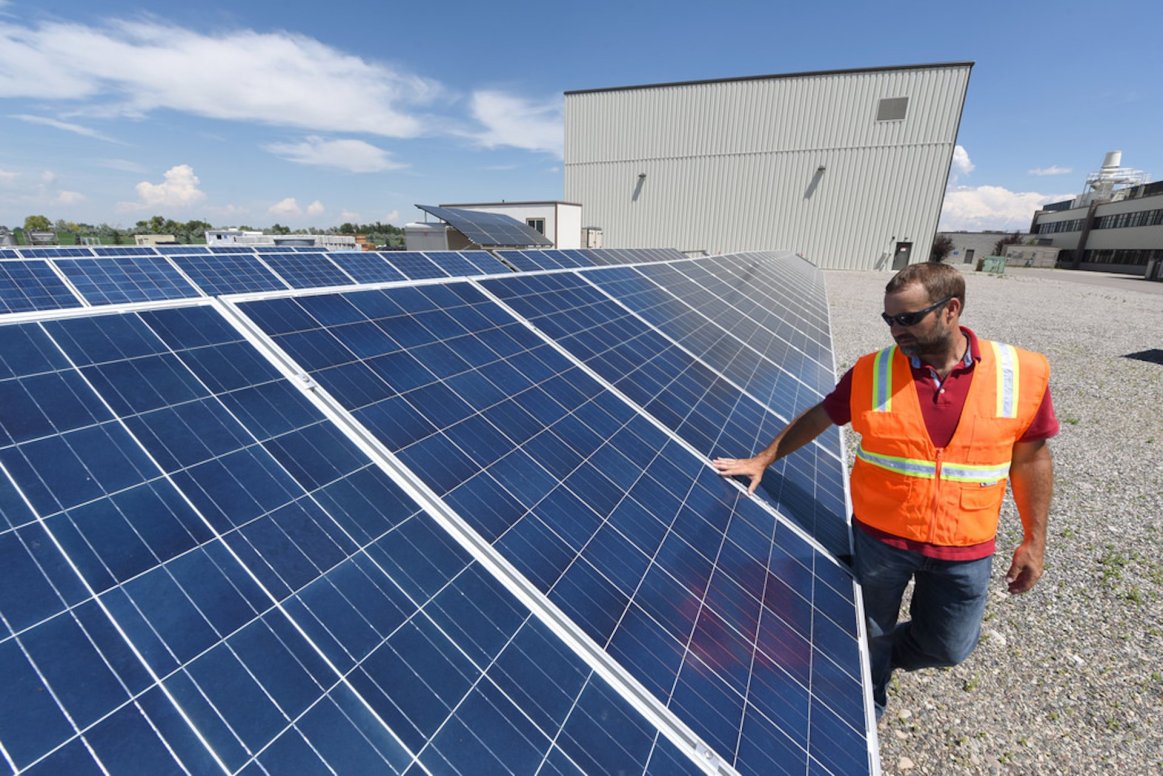
Greentech Renewables has previously covered microgrid overviews, regulations, and simulation technologies. This article is an update covering microgrid policies and implementation in the United States as of 2023.
There has been a substantial evolution in American microgrid development in the early 2020s. Landmark events such as the COP 28 conference and the passing of Biden’s IRA have demonstrated how prioritizing renewable energy infrastructure has become a mainstream global topic. Microgrids service specific geographic areas, for instance, campuses, neighborhoods, or hospitals. These unique, self-sufficient energy systems are often combinations of renewable energy sources, including solar and wind, frequently paired with energy storage systems and EV charging stations.
Some may associate microgrid systems with communities in developing countries with unstable energy infrastructure or emergency relief support initiatives. One of our recent microgrid projects in Maui, Hawaii, was developed in response to the devastating wildfires in West Maui. However, microgrids are a suitable solution for a wide range of use cases across the US due to their versatility, including bolstering community-wide resilience in response to intense weather patterns. Today, microgrids have evolved as a result of federal incentives and state-level policies.
Federal Incentives and Policies
The White House released a statement in October 2023 highlighting ‘grid-hardening’ efforts in the Bipartisan Infrastructure Law and Inflation Reduction Act. Both federal policies, signed into law in 2021 and 2022, contain investments and programs that support the development of microgrids in the country's rural, industrial, and urban regions. As a reference, the Department of Energy developed a Microgrid Installation Database for active microgrid systems in the US.
In Detroit, MI, one federally funded microgrid project focuses on establishing an adaptive microgrid using advanced communication tools to support energy supply and demand management. By deploying grid sensing and fault location devices, communications devices, and reclosers, the project will reduce the number and intensity of power outages in affected areas. In California, the US Department of Energy partnered with UC Irvine and several renewable energy industry leaders, including one of Greentech Renewables manufacturer partners, Schneider Electric, to develop residential microgrid communities. This project enables the development of all-electric neighborhoods that consist of residential buildings equipped with solar panels, batteries, EV chargers, and smart heat and cooling systems. Furthermore, the US Army pledged to incorporate microgrid concepts into the 100+ renewable energy and hybrid power projects by 2035. Many influential institutions have pressured the federal government to further refine microgrid-specific incentives. Agencies like the IRS and US Treasury desire clarity on tax credits, grants, and research funding to encourage the growth of resilient energy infrastructure throughout the country.
More recently, the US Department of Energy announced the Grid Resilience and Innovation Partnerships (GRIP) program, dedicating over $3 billion towards energy resilience projects. Many projects will implement microgrid structures to reinforce clean energy goals, climate action plans, and emergency response measures.
State-Level Policies
Beyond the federal government’s microgrid initiatives, many states have played a pivotal role in shaping the country’s microgrid landscape. Varied regulatory approaches and incentive programs have diversified the ecosystem, with several states emerging as leaders in adoption.
Advocacy group Think Microgrid collaborated with Wood Mackenzie to develop a State Scorecard that assesses microgrid market growth across all 50 states. States with the highest scores include Hawaii, Texas, Colorado, and Connecticut due to the specific laws highlighted below.
In 2021, the Hawaii Public Utilities Commission approved a Microgrid Services Tariff to “promote self-sufficiency and resilience among microgrid project operators.” Phase 1 of this tariff sets specific rules for customer-owned and hybrid arrangements, where the property owner remains reliant on some utility-owned infrastructure. Phase 2 will integrate anti-islanding mechanisms, identify areas for microgrid development, and incentivize microgrid investment for developers.
The Texas Power Promise program is one of several programs proposed by the 2023 Powering Texas Forward Act. While the program has not yet been implemented, it is projected to be the highest-funded state incentive for microgrids. Plans include utilizing public and private capital to implement “resilience-focused, behind-the-meter microgrid projects and dispatchable EV bus-to-grid battery storage projects.”
In Colorado, the 2021 Environmental Justice Act (EJA) has guided the Colorado Energy Office to develop of a ‘Microgrid Roadmap’ for the state. Simultaneously, the energy department developed a mapping tool to support project owners with equity-focused microgrid planning. Together, the initiatives stemming from the EJA are helping to safeguard vulnerable groups from energy-related distress caused by natural disasters.
The Microgrid Grant and Loan Program (2012) in Connecticut was one of the country’s first state-wide microgrid incentives. The language was revised in 2020 to emphasize energy resilience and renewable sourcing goals. Additionally, the state’s 2023 Environmental Justice law enacted parameters and specifications to prioritize microgrid projects that support low-income applicants and communities.
Along with relevant federal and state regulations, technological developments and evolving funding mechanisms have also impacted the growth of microgrids and distributed energy resources (DERs). Changes in funding mechanisms, including low-interest loans and public-private partnerships, have facilitated increased access to capital for microgrid projects. Improvements in solar module efficiency and innovations in energy storage solutions have influenced policy processes for renewable energy distribution. Policymakers often establish regulations to adapt to ever-changing solar technologies.
Regulatory hurdles and complexities remain significant barriers to the large-scale implementation of microgrid systems in many regions throughout the US. Research continues to be conducted into universal microgrid accessibility.
The evolution of microgrid policies over the past several years reveals an intricate dynamic between technology, regulation, finance, and collaboration, as these policies will have long-term impacts on the commercial and residential solar industries. As industry experts, Greentech Renewables is equipped with the knowledge and resources to support policy changes and ongoing industry oscillations. Connect with a local Greentech Renewables representative to learn more about solar policies and opportunities in your service area. For the latest industry updates, sign up for our national newsletter.